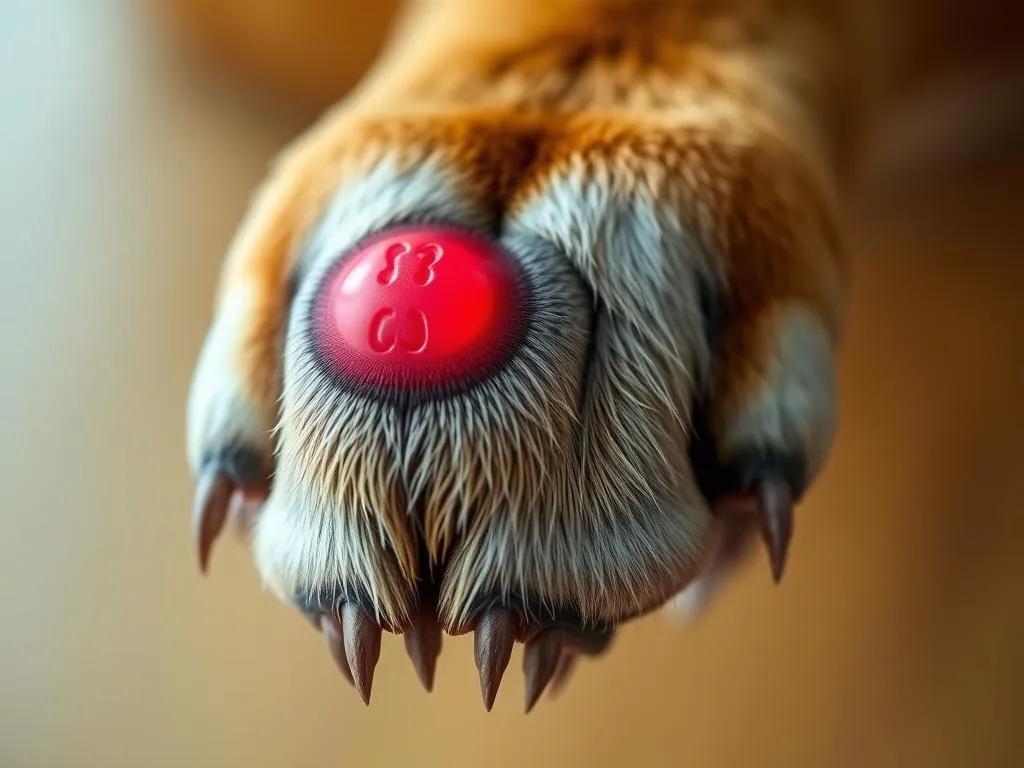
Introduction
As a devoted pet owner, ensuring your dog’s well-being is paramount. Among various health concerns, one that often raises alarms is discovering a tumor on your dog’s paw. Tumors can significantly affect your pet’s quality of life, making it crucial to understand their nature, signs, and treatment options. Early detection and timely intervention can lead to better outcomes. This article will guide you through the essentials of tumors on dogs’ paws, from understanding what they are to recognizing symptoms and exploring treatment options.
Understanding Tumors on Dogs’ Paws
What is a Tumor?
A tumor is an abnormal growth of tissue that results from excessive cell division. Tumors can be classified into two broad categories: benign and malignant. Benign tumors are non-cancerous, often slow-growing, and generally do not spread to other parts of the body. In contrast, malignant tumors are cancerous, can invade surrounding tissues, and may metastasize, or spread, to other areas. Understanding whether a tumor is benign or malignant is crucial for determining the appropriate treatment and prognosis.
Types of Tumors Commonly Found on Dogs’ Paws
Several types of tumors can develop on dogs’ paws, each with distinct characteristics:
-
Lipomas: These are soft, fatty tumors often found in older dogs. Lipomas are usually benign and feel like a movable lump under the skin.
-
Mast Cell Tumors: A type of skin tumor that can be more aggressive. They often appear as raised bumps and can vary in size and color. This type of tumor requires careful evaluation to determine its behavior.
-
Histiocytomas: Typically appearing in younger dogs, these are generally benign tumors characterized by round, red bumps. They often resolve on their own but should be monitored.
-
Sebaceous Gland Tumors: These tumors arise from the oil glands in the skin and can be benign or malignant. They often look like small, firm lumps.
Recognizing the type of tumor can assist your veterinarian in formulating an effective treatment plan.
Causes and Risk Factors
Understanding the causes and risk factors associated with tumors on dogs’ paws can help in preventive care:
-
Genetic Predispositions: Certain breeds are more susceptible to specific types of tumors. Research suggests that breeds like Boxers and Golden Retrievers may have higher incidences of mast cell tumors.
-
Age-Related Factors: Older dogs are at a greater risk for tumors due to accumulated cellular damage over time.
-
Environmental Influences: Exposure to certain chemicals, pollutants, or excessive UV radiation can increase the risk of developing tumors.
Being aware of these factors can help in recognizing potential risks your dog might face.
Signs and Symptoms of Tumors on Dogs’ Paws
Physical Signs
As a pet owner, you should be vigilant and watch for physical signs indicating the presence of a tumor on your dog’s paw:
-
Swelling or Lumps: Noticeable lumps or swelling on the paw, between the toes, or on the pads can be indicative of a tumor.
-
Changes in Nail Appearance: If you observe discoloration, unusual growth, or detachment of nails, this could signal a problem.
-
Unusual Growths or Sores: Any new growth or sore that does not heal should be examined by a veterinarian.
Behavioral Changes
In addition to physical signs, monitor your dog’s behavior for any changes:
-
Limping or Favoring the Affected Paw: If your dog is limping or hesitant to put weight on one paw, it could indicate discomfort due to a tumor.
-
Excessive Licking or Chewing at the Site: Dogs may lick or chew at their paws if they experience discomfort or pain.
-
Changes in Activity Level: A sudden decline in activity or a reluctance to walk can be a sign of underlying health issues, including tumors.
When to Consult a Veterinarian
Regular veterinary check-ups are crucial for maintaining your dog’s health. However, certain red flags should prompt immediate veterinary attention:
- If you notice any new lumps or bumps, especially those that grow quickly.
- If your dog shows signs of pain, such as vocalizing or withdrawal from activities they usually enjoy.
- Any sudden changes in appetite, weight, or behavior warrant a visit to the vet.
Diagnosis of Tumors on Dogs’ Paws
Veterinary Examination
When you bring your dog to the veterinarian for a suspected tumor on their paw, the vet will conduct a thorough physical examination. They will assess the size, shape, and mobility of the lump, along with checking for any additional signs of systemic illness.
Diagnostic Tests
To confirm the diagnosis and determine the tumor’s nature, several diagnostic tests may be employed:
-
Fine Needle Aspiration (FNA): This involves using a thin needle to extract cells from the tumor, allowing for microscopic evaluation. This quick procedure helps identify the type of tumor.
-
Biopsy Procedures: A biopsy may be recommended if the FNA is inconclusive. This involves taking a larger tissue sample for histopathological analysis.
-
Imaging Tests: X-rays, ultrasounds, or CT scans may be utilized to assess the tumor’s extent and check for metastasis.
Accurate diagnosis is essential for determining the best treatment approach.
Treatment Options
Surgical Removal
If a tumor is diagnosed, the primary treatment often involves surgical removal. Indications for surgery include:
- Tumors that are malignant or suspected to be cancerous.
- Tumors causing pain or discomfort to the dog.
During the procedure, the veterinarian will remove the tumor along with a margin of healthy tissue to reduce the risk of recurrence. Post-surgery, your dog may require pain management and monitoring during the recovery process.
Non-Surgical Treatment Options
In some cases, non-surgical treatments may be appropriate:
-
Chemotherapy and Radiation Therapy: These options are typically reserved for malignant tumors. Chemotherapy uses drugs to target cancer cells, while radiation therapy helps to shrink tumors and alleviate pain.
-
Medications for Pain Management: Pain relief is essential, especially for dogs recovering from surgery or undergoing treatment.
-
Alternative Treatments: Some dog owners explore holistic therapies, such as acupuncture or herbal remedies, to support their dog’s overall health during treatment.
Post-Treatment Care
After treatment, follow-up appointments are critical for monitoring your dog’s recovery and checking for any signs of recurrence. Regular assessments help ensure that any changes are promptly addressed.
Prevention and Early Detection
Regular Veterinary Check-ups
Routine veterinary visits are vital for early detection of potential health issues, including tumors. Generally, dogs should have annual check-ups, but older dogs or those with a history of tumors may require more frequent visits.
Home Care and Observations
As a responsible dog owner, you can play a crucial role in your dog’s health by observing for any changes:
-
Tips for Checking for Lumps: Regularly run your hands over your dog’s body, paying special attention to the paws. Familiarize yourself with what is normal to spot changes quickly.
-
Maintaining a Healthy Lifestyle: A balanced diet and regular exercise can help support your dog’s immune system and overall health, potentially reducing the risk of tumors.
Awareness of Risk Factors
Educating yourself about genetic predispositions and environmental factors can further inform your dog’s care. Be proactive in minimizing exposure to harmful chemicals and providing a safe environment.
Conclusion
Understanding tumors on dogs’ paws is crucial for any pet owner. By recognizing the signs and being aware of the various types of tumors, you can act swiftly to seek veterinary attention. Regular check-ups, vigilance in observing changes, and maintaining a healthy lifestyle will contribute to your dog’s overall well-being. Early detection and treatment are key to managing this significant health concern, ensuring your furry friend lives a happy and healthy life.
FAQs
Common Questions about Tumors on Dogs’ Paws
What should I do if I find a lump on my dog’s paw?
If you discover a lump, schedule an appointment with your veterinarian for an evaluation. It’s better to err on the side of caution.
Are all tumors on dogs’ paws cancerous?
No, not all tumors are cancerous. Many are benign, but it’s essential to have any lump assessed by a veterinarian to determine its nature.
How can I support my dog during treatment?
Provide a comfortable environment, adhere to any medication schedules, and maintain regular communication with your veterinarian regarding your dog’s recovery.
Myths and Misconceptions
Myth: Tumors are always cancerous.
This is not true; while some tumors are malignant, many are benign and can be managed effectively.
Understanding the facts surrounding tumors on dogs’ paws can empower you to take proactive measures in your dog’s health care.









